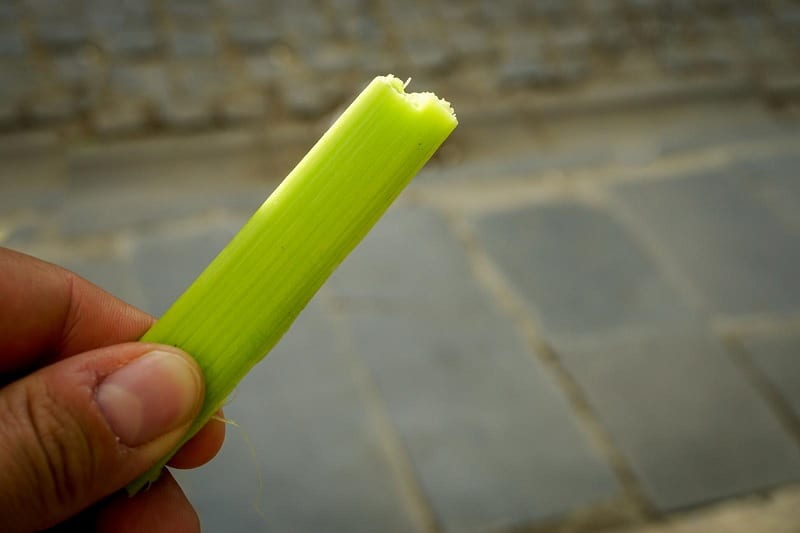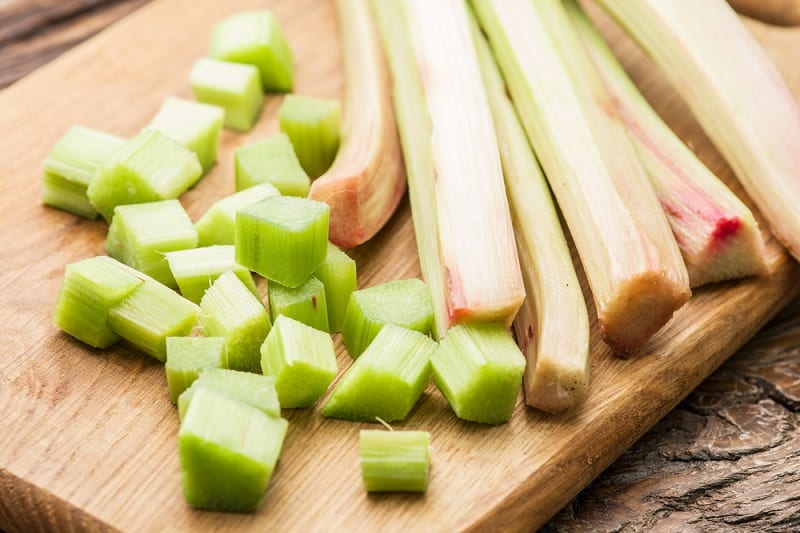Despite its sour taste, rhubarb is still well-loved by many in the UK. In the spring and summer, it’s typically enjoyed in crumbles, jams, pies, and various other sweet treats.
Although rhubarb is generally known for being red or pink, people who grow it at home often find the stalks coming out green.
You might assume this is because the stalks are not yet ripe for harvesting, but some people find that rhubarb never reaches the desired red colour, no matter how long they leave it growing.
In this situation, it can be hard to know whether your green rhubarb needs to be harvested or not. To help you out, we’ve put together a simple guide on when it is and isn’t safe to eat rhubarb and why your stalks are coming out green.
So, can you eat green rhubarb? Read on to find out!
Is It Safe to Eat Green Rhubarb Stalks?
Red stalks of rhubarb may look more appealing to eat than their green counterparts, but in the grand scheme of things, the colour of your rhubarb doesn’t matter.
There are various varieties of rhubarb grown in the UK, which can range from bright red to soft green. Each of these varieties will have a similar, tart taste and are entirely safe to eat.
The only potential problem with green stalks of rhubarb is how they look. When cooked down, green rhubarb lacks the nice rosy colour that people often desire.
Because of this, many people avoid using green stalks when stewing their rhubarb or making it into a jam.
If this is a concern for you, there are some things you can do to ensure your cooked rhubarb always comes out pink:
- Add a little strawberry or raspberry gelatine
- Add a few drops of red food colouring
- Only use red rhubarb
Does Green Rhubarb Taste the Same as Red?
You’re not alone in assuming that green rhubarb must taste different to its attractive red equivalent.
Many people expect green stalks to have the unpleasant sour taste which is associated with underripe food. However, assuming you’re eating a green variety, there is no significant difference in taste.
In most cases, a green stalk is not an indicator that the rhubarb is less ripe or sweet. And if your stalks are particularly sour, this can easily be offset by adding a little more sugar to your recipe.

When Should Rhubarb Not Be Eaten?
Most of the time, rhubarb stalks, whether they are red or green, are safe to eat.
However, rhubarb leaves contain high levels of oxalic acid, a substance that is toxic to humans. This acid can cause nausea and vomiting when consumed in small amounts, which is bad enough! But higher doses can lead to kidney failure and even death (although the latter is very rare).
If a rhubarb plant is exposed to freezing temperatures, some of this oxalic acid may move into the stalks, causing your rhubarb to become poisonous.
Some common signs include wilted and blackened leaves or a limp stem. If you notice any of these signs of damage, it is best to discard the affected stalks just to be safe.
This being said, you don’t need to worry too much if you have eaten some toxic rhubarb. The amount of oxalic acid in one stalk will not cause too much damage, so a trip to the hospital can be avoided.
It’s only when large amounts of toxic rhubarb have been consumed that it will become a life-threatening dose.

Hannah is a freelance content writer and self-proclaimed foodie. When Hannah isn’t sitting tapping at her laptop, you’ll probably find her in the kitchen. As an ex-chalet host, she’s used to cooking four-course meals for 10+ people and loves feeding friends and family whenever possible.

